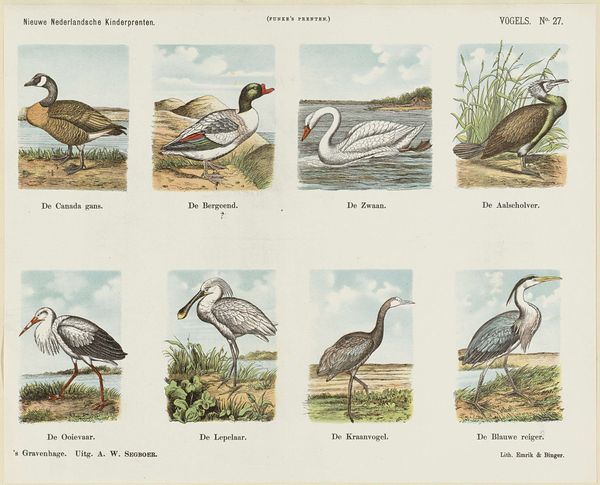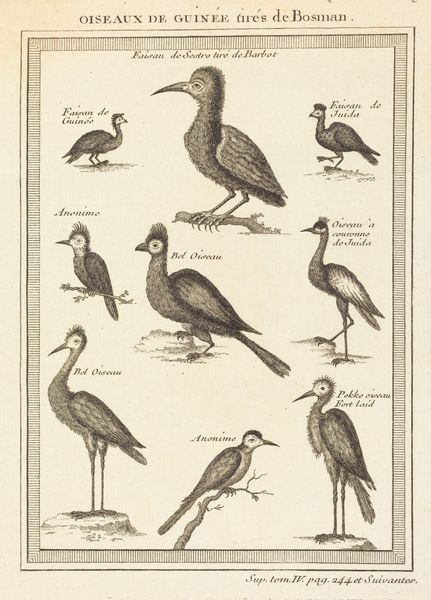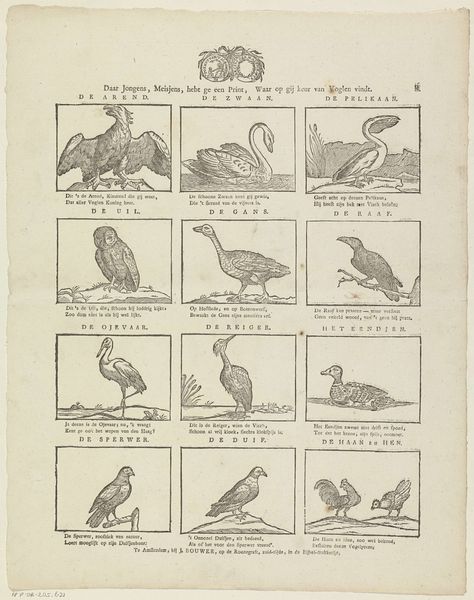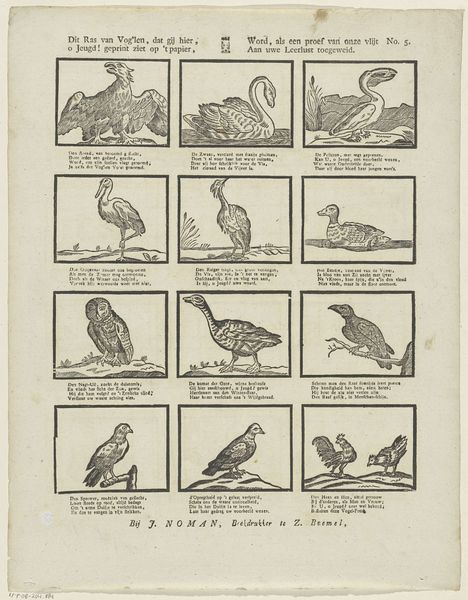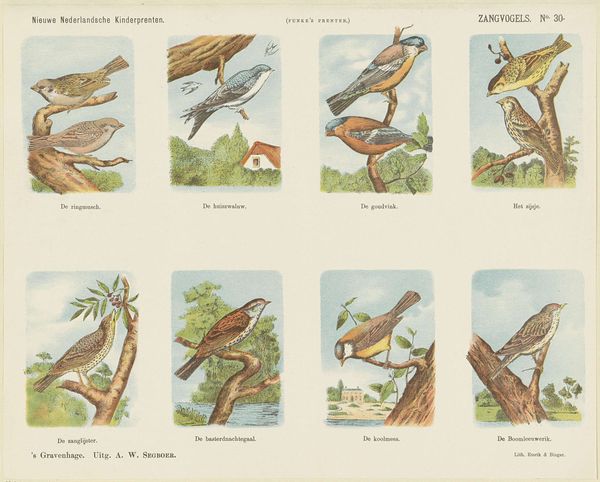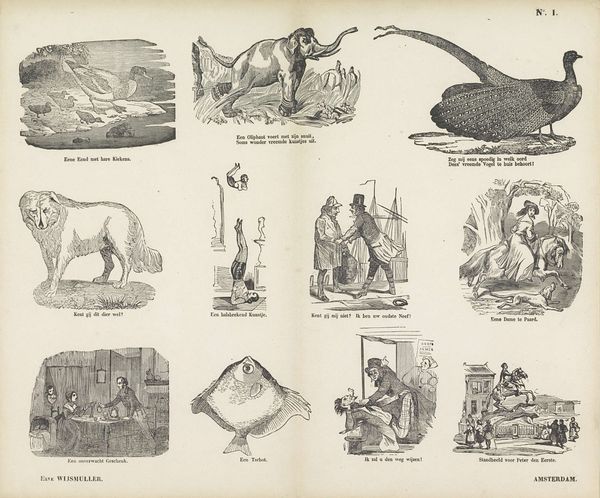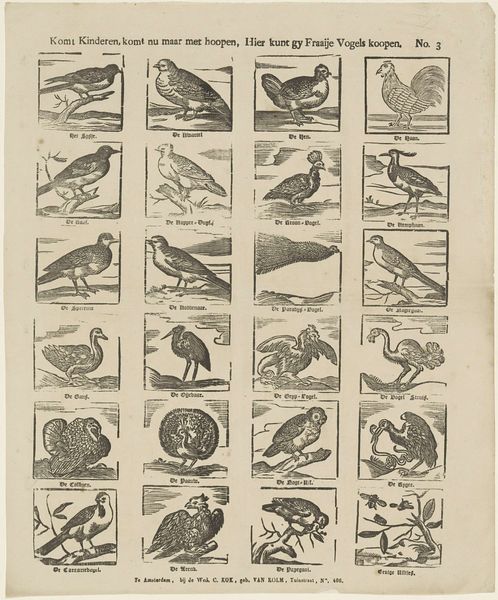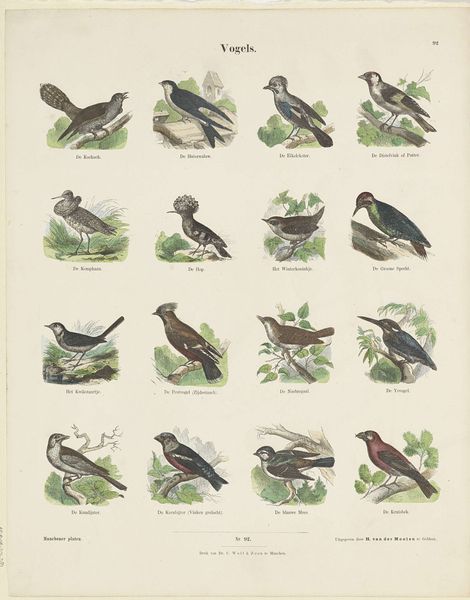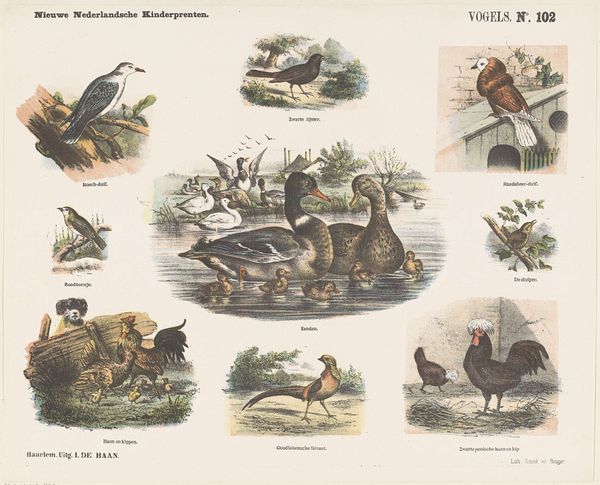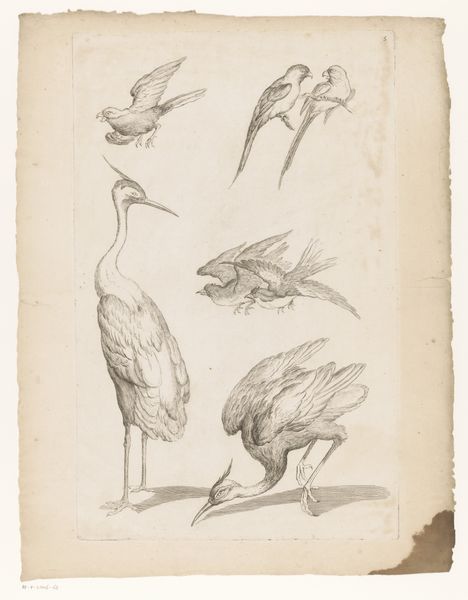
Dimensions: height 336 mm, width 428 mm
Copyright: Rijks Museum: Open Domain
Editor: Here we have "Vogels," a print made between 1865 and 1875 by George Lodewijk Funke. It showcases several different bird species in separate vignettes, all rendered in ink. There's something almost scientific about the way they’re presented, like a page from a naturalist’s sketchbook. What stands out to you when you look at this work? Curator: Immediately, I am drawn to the deliberate arrangement. Notice how Funke hasn't just randomly scattered these avian portraits. There's a rhythmic quality in the way they’re presented, suggesting a deeper cultural memory at play. Do you sense a connection, perhaps, to earlier bestiaries or even heraldic traditions in this ordering? Editor: I hadn't considered that. I was focusing more on the individual depictions. But you’re right, they do have a very formal presentation, like a family portrait. Curator: Exactly! And that formality lends weight to the symbolic value we might attach to each bird. Think about it—swans often represent grace and beauty, herons patience, and so on. These associations aren’t arbitrary; they’ve accrued over centuries through stories, myths, and cultural practices. How might these associations have resonated with the intended audience of "kinderprenten," children’s prints? Editor: That's fascinating. So, it's not just about identifying different bird species, but about learning their symbolic language too? Perhaps even learning something about national identity, associating particular animals with national characteristics or virtues. Curator: Precisely. And Funke is tapping into that reservoir of meaning, subtly shaping young minds through visual symbols. These prints become not just educational tools but also vehicles for cultural transmission. We must acknowledge too that the geometric presentation mirrors ideas about order and classification, prevalent during that time period. It represents a snapshot of a society attempting to categorize the natural world around them, as well as impart knowledge in an ordered fashion. Editor: This has really shifted my understanding of the print. I was initially drawn to the simple beauty of the birds, but now I see it as a layered composition full of symbolism and cultural significance. Curator: Indeed! It's a testament to how seemingly simple images can carry immense cultural and historical weight if we learn to look closely and ask the right questions.
Comments
No comments
Be the first to comment and join the conversation on the ultimate creative platform.
